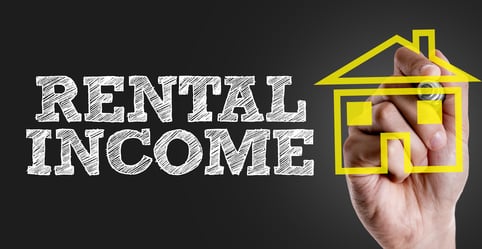You’re probably familiar with the 80/20 rule also known as “Pareto’s Principle”. Obviously the 80/20 rule is a generality but basically it means there is an unequal relationship between inputs and outputs. The principle states that 20% of the invested input is responsible for 80% of the results obtained. That’s not particularly a good thing because the inverse is that 80% of your input only produces 20% of your results. If you want more time in your life, it would be good if 80% (or less) of your efforts produced 80% of your results.

It’s safe to say that 80% of the residential real estate investments you consider won’t work out financially. What is useful is being able to quickly discard deals that will not meet your financial goals. That leaves you with a lot more time to do detailed analysis on the deals promising superior financial performance or however else you like to spend your time.
6 Step Basic Analysis
You can use this preliminary analysis for rentals or with slight changes it can be applied to rehab and flip deals. Each step builds on the previous step. When one step doesn’t meet your criteria, you can stop without putting in any more effort. Often this can be done without visiting the property or as a decision guide to whether you do want to inspect the property closer.
- Only consider houses that you are knowledgeable about and are in your financial investing range. You should know the neighborhood. The school district, shops, average home prices, crime rate, etc. If the house interests you but you don’t know the neighborhood, spend some of your new found time learning the neighborhood before digging into a specific house.
- Consider basic rehab costs. This shouldn’t be much more than fresh paint and carpet. Since you know the neighborhood, you should have a hip pocket idea for quality and cost - perhaps a $7,000 average on the low end. With experience, you should also have hip pocket estimates for medium and major rehab cost. Maybe $15,000 and $25,000 respectively. Along with labor and materials be sure to include vacancy and demolition costs.
- Add the purchase cost and rehab costs together. Include typical closing costs and related fees. This total is your investment cost. If the purchase cost is $70,000 and you have $7,000 in basic rehab plus $10,000 in closing costs, your investment cost adds up to $87,000.
- Calculate your monthly loan payment. Some experienced investors think knocking off two zeros from your investment cost is close enough but it’s worth the minute it takes to run the numbers through a mortgage calculator. In the $87,000 example with $5,000 down and at 4% interest the monthly payment is about $400 (before taxes and insurance) rather than the $870 you get by knocking off the two zeros ($87,0ØØ).
- Based on the neighborhood and your experience add a little more to the monthly cost to account for future vacancies and maintenance. Maybe $150, which brings your average monthly cost up to $550.
- Roughly calculate your cash flow and equity. Subtract your monthly costs from the low end of the rent that you expect to collect for a rough estimate of your cash flow. Your equity is the difference between the after rehab value and your total purchase plus investment cost. Obviously, a good investment is one with both positive cash flow and positive equity.
It should take no more than a few minutes to walk through a basic investment analysis. Stop at any time the numbers make it clear the opportunity doesn’t meet your financial criteria. If it passes all six steps, you want to move on to a thorough analysis that includes a detailed inspection and spreadsheet that captures all of your costs.
Other Ways to Save Time and Improve Efficiency
Look for other ways to reduce the tasks that take up 80% of your time but only produce 20% of the results. A few ideas might be:
- Evaluate where most of your motivated seller leads are coming from. If you use a combination of wholesalers, bandit signs, and craigslist ads but 80% of your leads come from wholesalers that is where most of your effort should be.
- Do the same thing regarding finding renters or buyers (for flips). Put most of your effort into the method that produces the most results.
- Evaluate your rehab and remolding costs. How much more rent are you able to generate by upgrading the kitchen instead of just sprucing up the paint and carpet? How long does it take you to recover the kitchen investment?
- Which of your properties are generating the most profit? On a regular basis you should be considering the cost of “opportunity lost”. In other words, is it time to sell a lower performing property and replace it with a higher performing property?
What time saving and efficiency techniques can you share with others? Please leave a comment.
 Author bio: Brian Kline has been investing in real estate for more than 35 years and writing about real estate investing for 10 years. He also draws upon 30 plus years of business experience including 12 years as a manager at Boeing Aircraft Company. Brian currently lives at Lake Cushman, Washington. A vacation destination, a few short miles from a national forest. With the Pacific Ocean a couple of miles in the opposite direction.
Author bio: Brian Kline has been investing in real estate for more than 35 years and writing about real estate investing for 10 years. He also draws upon 30 plus years of business experience including 12 years as a manager at Boeing Aircraft Company. Brian currently lives at Lake Cushman, Washington. A vacation destination, a few short miles from a national forest. With the Pacific Ocean a couple of miles in the opposite direction.
Brian Kline has been investing in real estate for more than 30 years and writing about real estate investing for seven years with articles listed on Yahoo Finance, Benzinga, and uRBN. Brian is a regular contributor at Realty Biz News
Latest posts by Brian Kline
(see all)
 Author bio: Brian Kline has been investing in real estate for more than 35 years and writing about real estate investing for 10 years. He also draws upon 30 plus years of business experience including 12 years as a manager at Boeing Aircraft Company. Brian currently lives at Lake Cushman, Washington. A vacation destination, a few short miles from a national forest. With the Pacific Ocean a couple of miles in the opposite direction.
Author bio: Brian Kline has been investing in real estate for more than 35 years and writing about real estate investing for 10 years. He also draws upon 30 plus years of business experience including 12 years as a manager at Boeing Aircraft Company. Brian currently lives at Lake Cushman, Washington. A vacation destination, a few short miles from a national forest. With the Pacific Ocean a couple of miles in the opposite direction.